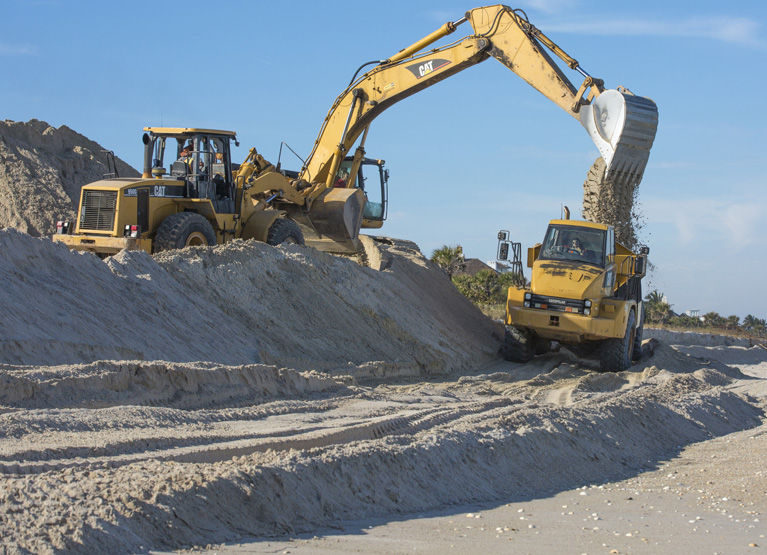
INDIAN RIVER COUNTY — The snowbird winter residents of Windsor and the Orchid Island Golf & Beach Club, who usually flock to the beach for holiday walks, swims and tans, are having to reconsider this holiday season.
A six-mile stretch of beach near their homes has temporarily become the site of a truck rodeo because of a dune restoration project.
To venture onto the beach between Windsor and north John’s Island these days is to risk being mowed down by a truck racing up and down the water’s edge, or drowning in a waterfall of sand cascading from a mechanical yellow claw.
While the project is a necessity to reverse erosion caused by Hurricane Sandy in October 2012, and unusually high seas a few weeks ago, it’s cutting dramatically into fun and sun time for holiday beachcombers.
“This project to repair the dunes takes a lot longer than beach repair, but when it’s completed we will have significantly increased the longevity of the dunes,” said Indian River County coastal engineer James Gray.
The restoration of six miles of sand dunes on the ocean in the Wabasso area began on Nov. 10, and now, more than six weeks later, is 20 percent completed.
It will likely continue through April, temporarily shutting down beaches used by Marbrisa, Sea Oaks, Carlton, Bay Tree, Sanderling, Windsor and John’s Islands residents, as well as guests at the Disney resort.
About 54,700 cubic yards of sand from the Davis and Hammond/Blue Goose Sand Mines in west Vero Beach are being dumped on the eroded dunes, and 200,000 dune plants will be placed along six miles of shoreline from Treasure Shores Beach Park to 1,500 feet south of Turtle Trail Beach Park, which encompasses the northern portion of John’s Island.
The $5.4 million bill for the job is being split between the Florida Department of Environmental Protection and Indian River County.
The work will go on seven days a week from dawn to dusk in order to meet an April 30 deadline, project managers predicted.
“Think of it as minimal disruption for maximum gain,” said coastal engineer Gray.



